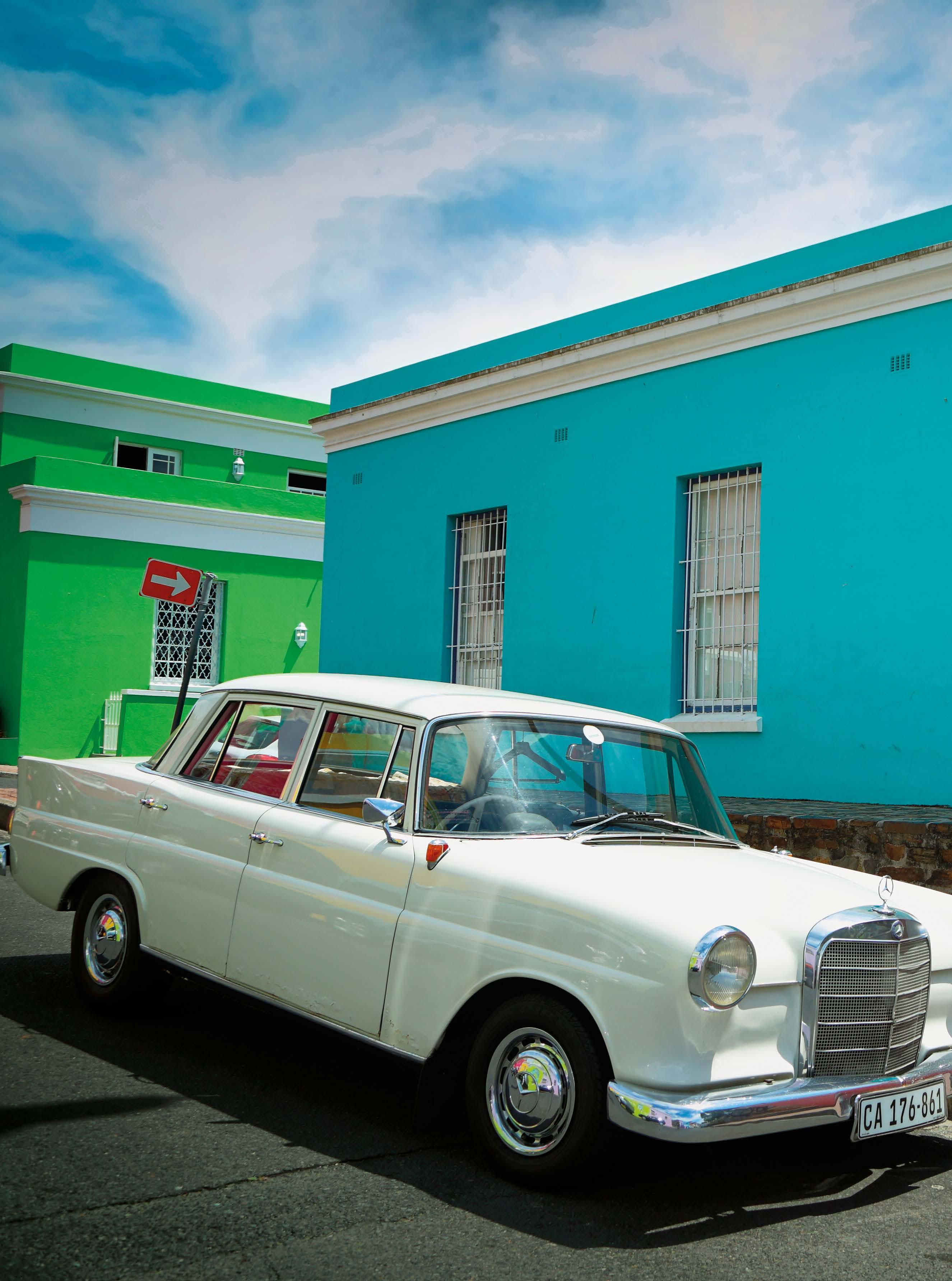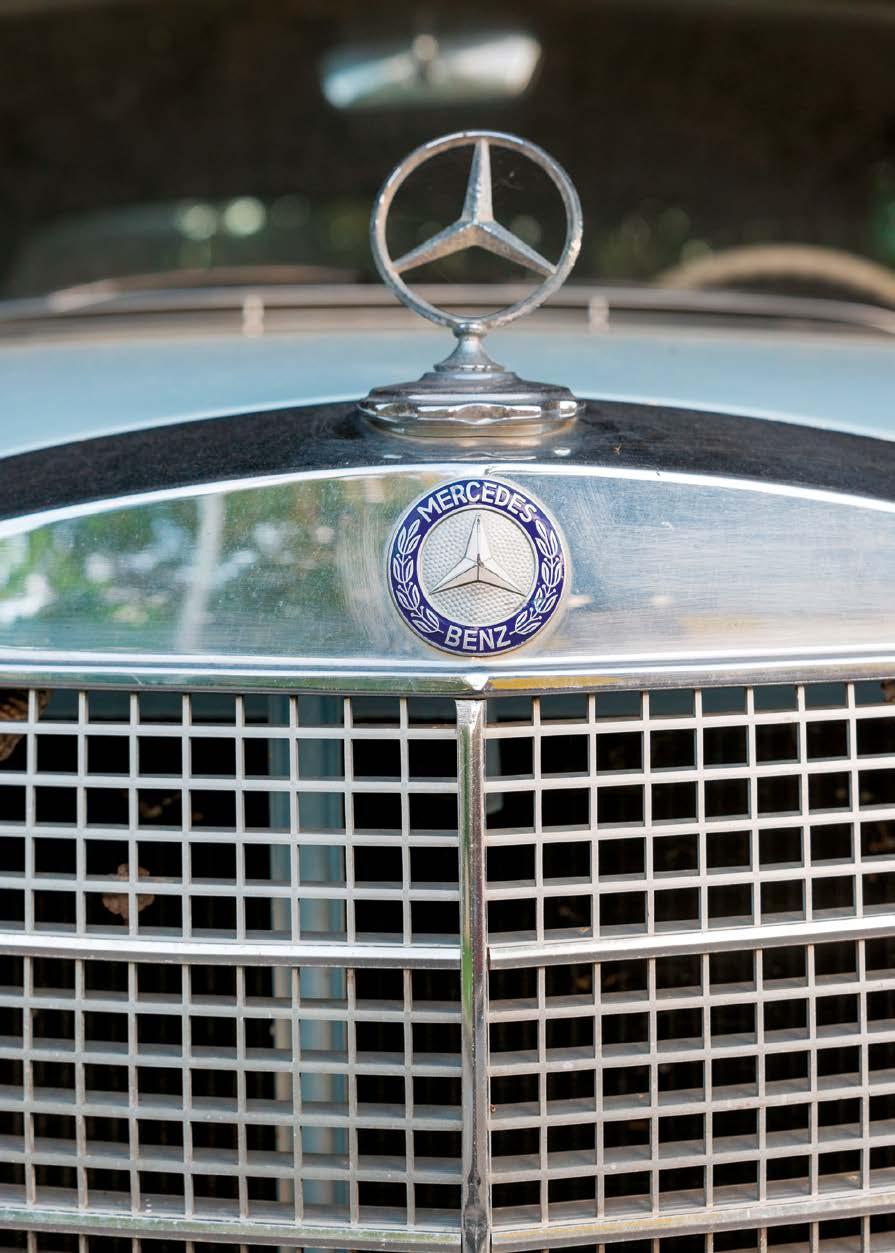
5 minute read
The Real Wilds of Africa

BY SHANE OOSTHUIZEN
Advertisement

Mercedes’ love affair with Africa started in 1896, when a gentleman by the name of John Percy Hess imported the first Benz into Africa. The depths of Africa

have always been reserved for the toughest of four-wheel drives. When recently asked what I deemed to be “the toughest car in Africa”, it was no surprise that I confidently answered “Toyota Land Cruiser”.
In essence, I wasn’t that far off. Toyota continues to be the most successful marque in Africa with many an old Land Cruiser, Hilux and Corolla bearing testament to the brand’s durability.
However, after much deliberation, I’ve since changed my point of view somewhat.
When it comes to conversations about the toughest vehicles on the planet – usually had around an open fire and charring meat – four-wheel drives almost always feature. After all, what’s tougher than a large, tall-riding SUV charging through the desert? Toughness, though, is not a straightforward idea. On the one hand, it can be defined by the ability to handle all the punishment Africa, and her people, can throw at it. On the other hand, toughness can speak to how long this relentless abuse can be taken.
We know that the likes of the Hilux and Cruiser excel in these areas. But there is another brand that has by far surpassed the legend that is Toyota. We don’t often associate it with toughness, but it has all the credentials to be a contender.
While watching a recent documentary about North Africa’s political infighting, I kept noticing one car brand over and over again – Mercedes-Benz.
The unmistakable shape of late 1970s and early 1980s Mercs dominated the traffic in city streets. From buses to tipper trucks to sedans, one could make out Mercedes insignia in just about every shot. This begged the question – could the posh, German, luxury car be one of the most resilient cars in Africa?
The stats, of course, only reinforce this line of thought. Two out of every three cars in circulation in Mauritania are 1980s Mercedes-Benz 190 sedans and this gives the country’s car traffic a very particular character.
Similarly, no less than half the cars in circulation in Bamako, Mali’s capital and biggest city, are old Mercedes’, imported from Europe. These are mainly 1980s Mercedes 190s, 220s, 230s and 1990s Mercedes C-Class, all relegated to taxi service.
By years of service alone, Mercedes has managed to forge itself a reputation of wrought steel. It’s a testament to the unrelenting durability of the old cars that has seen them test the sands of time. And win. So much so, in fact, that Mercedes-Benz even offers something called a high mileage award for vehicles that have done in excess of 250,000kms.
Mercedes-Benz first introduced the high mileage award in the 1960s to recognise the vehicles still on the road that had reached the 100,000 miles mark, some had even exceeded the
700,000 miles mark. The mind boggles when you think how many miles the Mercs of Africa have done, completely off the grid and unmeasured.
In many ways then, Merc’s history by far outstretches that of many other marques in Africa. Other than the Japanese staple breeds such as Toyota and Nissan, the only other real competitor to the toughness throne (could that be the iron throne then?) comes from the French stables of Peugeot and Renault.
Mercedes’ love affair with Africa started in 1896, when a gentleman by the name of John Percy Hess imported the first Benz into Africa. At that time, he told the then Bank of Africa to arrange payment to the manufacturer, Benz & Co. of Mannheim in Germany. The car was shipped to Port Elizabeth in 1896 and transported to Pretoria by railway.
Hess became the sole agent for Benz Motors in South Africa, driving his two-seater Benz Velo for the first time in 1897. This was such a grand occasion that President Paul Kruger was in attendance, having commissioned a specially minted gold medal to commemorate the day.
A week later, the Benz was shown at the Wanderers in Johannesburg and sold to coffee importer A.H. Jacobs who offered a viewing to anyone who purchased 500g of coffee from his Pritchard Street shop. Of course, as irony then kicked in for the new owner, a few months later the car was destroyed in a fire.
The continent of Africa has since enjoyed a long and prosperous working relationship with the 3-pointed star.
Egypt’s Egyptian German Automotive Company accounts for the bulk of the world’s E-Class, C-Class and GLK manufacture, while Nigeria assembles the majority of the Mercedes-Benz branded trucks, buses and Sprinter vans. Even the muchrevered new C-Class is built in South Africa’s own world-class Mercedes-Benz factory in East London.
While the business end of Daimler-Benz thrives on the Dark Continent, it’s the customers who keep it going. Mercedes continues to be the dictator’s car of choice, and you can be sure to find an S-Class serving in almost every parliament in Africa. Needless to say then, having that 3-pointed star on your bonnet is as aspirational to the people as the cars themselves.
That said, it might be a long shot to simply bestow Mercedes with the much coveted title of “Toughest Car in Africa”. There are many aspects at play here. I know a 190 sedan will never be able to conquer the wilds of Africa like a Land Cruiser would. In fact, I doubt a G-Class could go where a Cruiser can. The point is that Mercedes has lasted in Africa. Not only in the metal, but as an aspiring brand.
Perhaps “toughest” is the wrong adjective to use. There is no doubting the brand’s footprint in Africa. It might not be the car to travel the forest paths and desert dunes, but it has been a car that has adapted to the toughest places in Africa – the cities.
Can Mercedes luxury and solid engineering translate into a vehicle tough enough for Africa?











